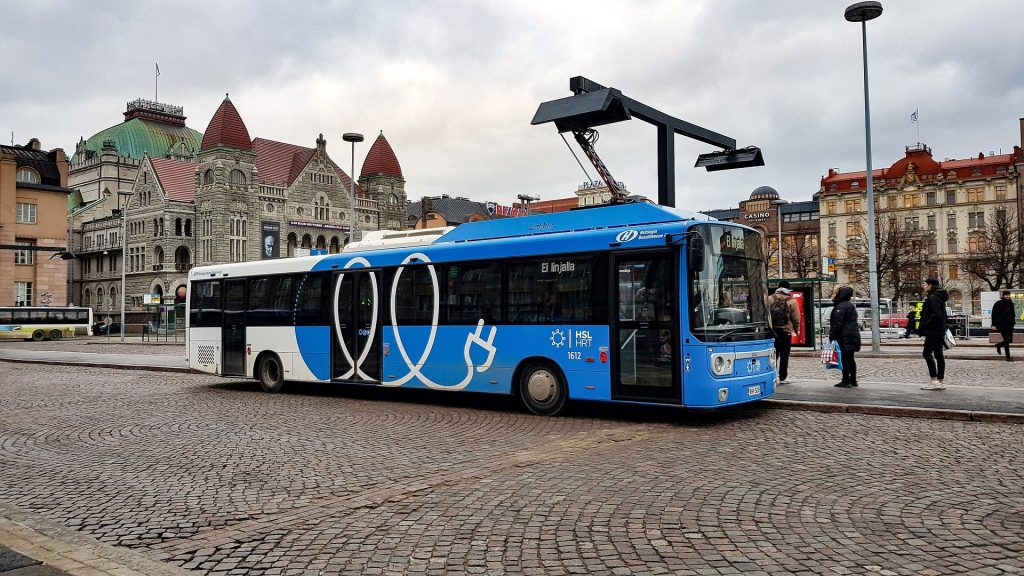Back in 1977, one of the bosses of a major computer manufacturer was quoted saying: “there is no reason for any individual to have a computer in his home”. Along the history of technology over the years, there have been many similar stories such as this, portraying how the concept of innovation and revolution was incomprehensible and often dismissed. Ideas that were basically considered ‘too far from reach’ or ‘practically impossible’ have fundamentally changed the way we now live and behave. The same can be said about E-mobility and the transformation of public transportation in Kenya. What was once considered unfathomable has now been championed thanks to collaborative efforts from public and private stakeholders across the world. Sustainable mobility has become the future of the automotive industry and broadly one of the major milestones of the Sustainable Development Goals (SDGs). However, the uptake of electric mobility is still very modest, despite Kenya being a continental leader in technology and innovation adoption. What therefore needs to be understood from this pursuit to facilitate greater uptake?
From a macro-economic perspective, movement of people and goods is fundamentally changing. From the initial use of coal to propel locomotive movement gradually into fossil fuels the developed world is looking to detach from the over-dependency on fossil fuels into low carbon-emitting energy. Granted, the transport sector is responsible for about ¼ of carbon emissions in the environment, which was a point of discussion in the COP26 conference. Consequently, the UN Convention on Climate Change witnessed thirty countries, including Kenya, agreeing to the collective pursuit of zero-emission vehicles (ZEVs), or electric vehicles (EVs), to reduce greenhouse gas emissions and combat climate change.
Across the continent, innovators and governments are slowly but surely actualizing the promise of cleaner and more affordable ways to travel and transport goods because it leads to employment creation, advancement in infrastructure and ultimately foreign exchange savings that would arise from low importation of petroleum products. Findings from the KNBS Economic Survey 2022 show that Kenya spent about KES 345 billion in petroleum fuels import for the year 2021. Concurrently, the annual increase in demand for petroleum products in Kenya resulted in record-breaking carbon emissions which as at 2021 stood at 22.4 million tonnes– an increase from 3.9 million tonnes in 1972. E-mobility has spurred advancement in local EV assembly, advancement in battery technology and charging infrastructure as well as the technical know-how of the operability of these vehicles. This has cumulatively seen an increasing number of firms such as BasiGo, Ampersand, Ecoboda and other charging station companies, roll out EV solutions.
Figuratively, electric vehicles have been considered luxurious commodities that can only be purchased by those considered wealthy in the society. Granted, the upfront cost of buying an EV was quite a challenge for most in hindsight. However, the market has gradually accommodated interests from different demographics thanks to the introduction of public electric transport models. As a strategic rollout plan, there are several EV public transport carriers already in operation in Kenya. Appealing to the masses, consumers of public transport who have had the opportunity to use the e-buses have sighted a number of positive attributes such as; reduced noise pollution, health benefits from the low-emitting environment pollution, improved vehicle performance and an almost better option in terms of safety since they are designed to carry slightly lower number of passengers.
A number of challenges inhibit full adoption of public electric mobility in Kenya. First, the limited supporting infrastructure to accommodate public electric vehicles remains a grave concern. Long-distance travel remains impossible due to inadequacy of charging stations. Moreover, charging time while using an electronic vehicle is time-consuming, in comparison to fueling a conventional vehicle, proving it to be inconvenient, especially on longer journeys, carrying many people. Secondly, policy interventions and legal frameworks appear to be absent or unfamiliar to guide classifications of electric vehicles and thereafter clearance from the ports. Additionally, fiscal incentives should be availed, to enable investors contribute and boost local assembly of electric vehicles. Currently, Kenya is still importing electric vehicles parts and assembling them here, however, more value addition needs to be done locally to ensure self-reliance and the development of local capacity in the production of these machineries. For instance, direct tax incentives have been administered in Germany and the United Kingdom, by offering tax exemptions for locally assembled electric vehicles.
Thirdly, sensitization and communication frameworks appear inaudible in this quest. Talks on how to refine and adopt e-mobility through technology advancement, innovative business modeling through research and development and campaigns on eco-friendly initiatives by the respective market players and stakeholders have not gathered momentum amongst consumers and investors, possibly due to lack of financing.
One way that this can be remedied is through entering into cooperative agreements between countries in Africa and around the world, develop feasible projects that will explore betterment of e-mobility adoption whilst mitigating against eminent constraints such as cost-competition and hazardous risks. Ministries in Kenya (Transport and Infrastructure, Environment, Climate Change & Forestry), players in the insurance and banking sector and leading think-tanks need to assimilate effective strategies to resolve barriers and present opportunities for different players in the industry. In the fullness of time, what is considered a small step for Kenya, will potentially contribute to that giant leap for mankind’s quest for sustainable mobility.


